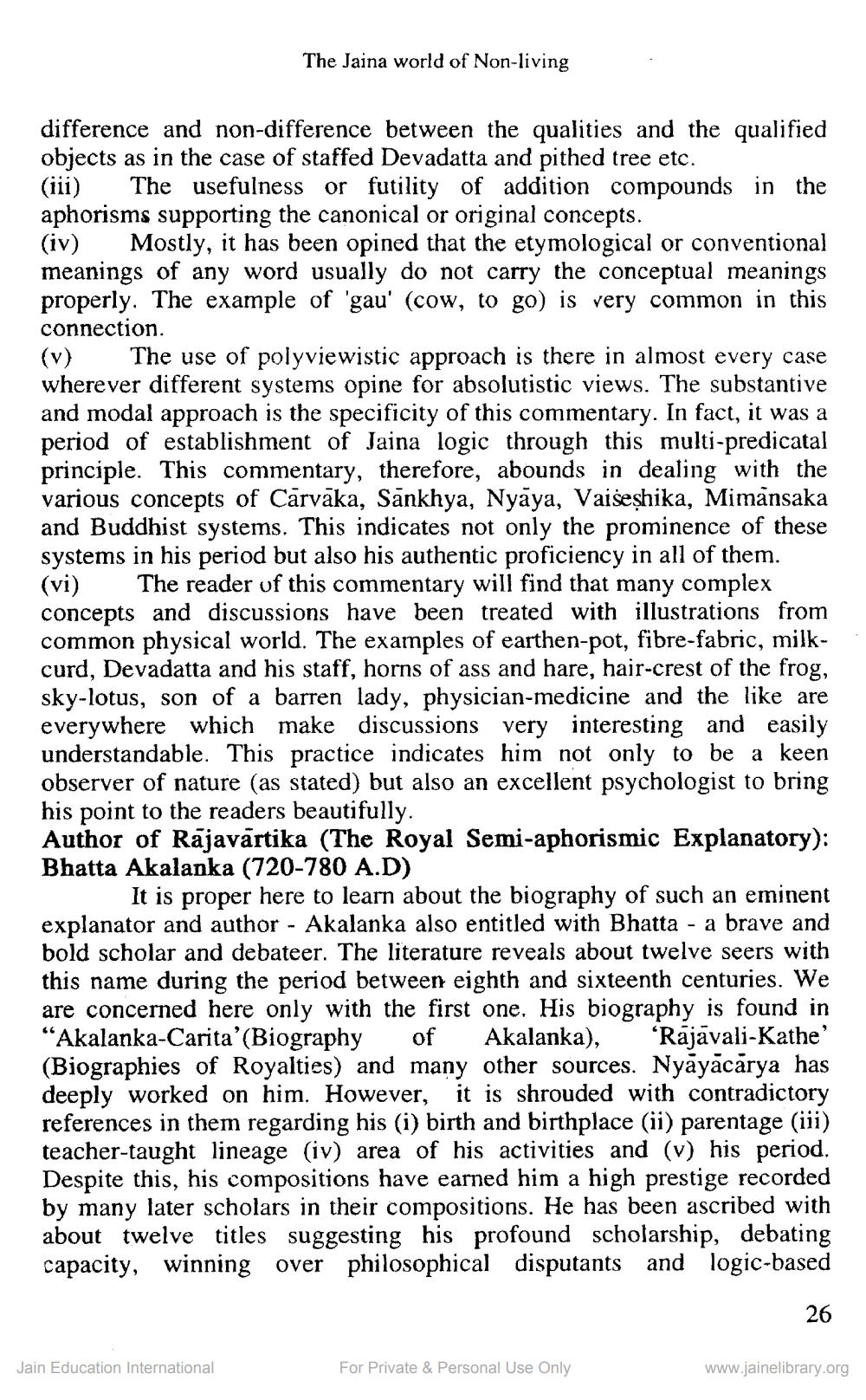________________
The Jaina world of Non-living
difference and non-difference between the qualities and the qualified objects as in the case of staffed Devadatta and pithed tree etc.
(iii)
The usefulness or futility of addition compounds in the aphorisms supporting the canonical or original concepts.
(iv) Mostly, it has been opined that the etymological or conventional meanings of any word usually do not carry the conceptual meanings properly. The example of 'gau' (cow, to go) is very common in this connection.
(v)
The use of polyviewistic approach is there in almost every case wherever different systems opine for absolutistic views. The substantive and modal approach is the specificity of this commentary. In fact, it was a period of establishment of Jaina logic through this multi-predicatal principle. This commentary, therefore, abounds in dealing with the various concepts of Carvāka, Sankhya, Nyaya, Vaiseshika, Mimansaka and Buddhist systems. This indicates not only the prominence of these systems in his period but also his authentic proficiency in all of them. (vi) The reader of this commentary will find that many complex concepts and discussions have been treated with illustrations from common physical world. The examples of earthen-pot, fibre-fabric, milkcurd, Devadatta and his staff, horns of ass and hare, hair-crest of the frog, sky-lotus, son of a barren lady, physician-medicine and the like are everywhere which make discussions very interesting and easily understandable. This practice indicates him not only to be a keen observer of nature (as stated) but also an excellent psychologist to bring his point to the readers beautifully.
Author of Rajavārtika (The Royal Semi-aphorismic Explanatory): Bhatta Akalanka (720-780 A.D)
66
It is proper here to learn about the biography of such an eminent explanator and author - Akalanka also entitled with Bhatta - a brave and bold scholar and debateer. The literature reveals about twelve seers with this name during the period between eighth and sixteenth centuries. We are concerned here only with the first one. His biography is found in 'Akalanka-Carita' (Biography of Akalanka), 'Rajavali-Kathe' (Biographies of Royalties) and many other sources. Nyāyācārya has deeply worked on him. However, it is shrouded with contradictory references in them regarding his (i) birth and birthplace (ii) parentage (iii) teacher-taught lineage (iv) area of his activities and (v) his period. Despite this, his compositions have earned him a high prestige recorded by many later scholars in their compositions. He has been ascribed with about twelve titles suggesting his profound scholarship, debating capacity, winning over philosophical disputants and logic-based
Jain Education International
For Private & Personal Use Only
26
www.jainelibrary.org




